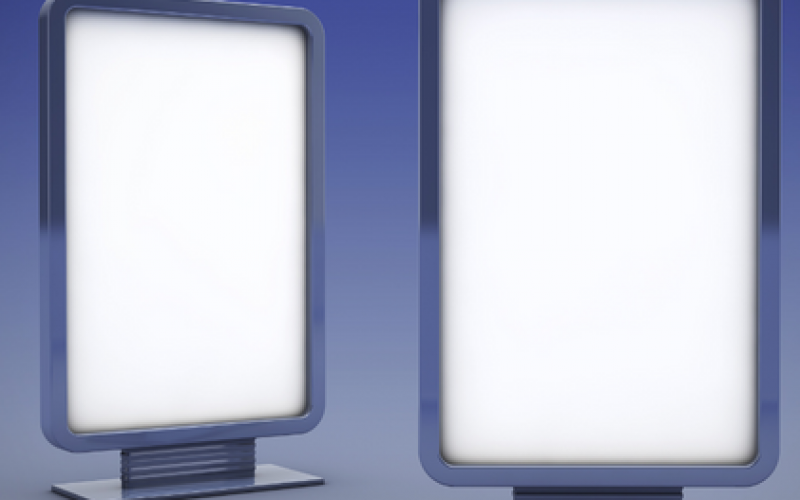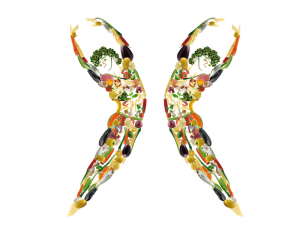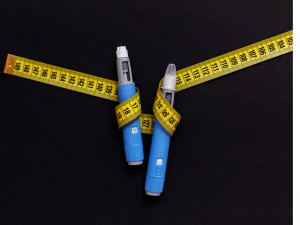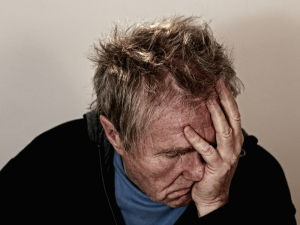It’s September, and the nights are drawing in so quickly it’s reminded me that this is the critical time to put measures in place if you have or are at risk of Seasonal Affective Disorder (SAD)
Winter depression is the other name for SAD; it’s a type of depression triggered by the change of seasons, most commonly in late autumn or early winter in the northern hemisphere, but it can happen at any time of the year.
This post focuses on prevention, self-help and treatment; you can read a more in-depth blog here;
Causes and risk factors
The exact cause of SAD is not fully understood; the current hypothesis is that reduced exposure to sunlight affects our circadian rhythm, the body’s internal clock, and the production of melatonin and serotonin hormones which are essential for the wake-sleep cycle and mood. The other consideration is low Vitamin D; sunlight helps produce vitamin D, which supports serotonin levels and mood. As there is less sun in the winter, deficiency is more common.
Three facts about SAD
- It’s rare in people who live within 30 degrees of the equator, where daylight hours are long, constant, and bright, but it can affect anyone in the northern hemisphere.
- It may be genetic and affect children and adolescents; it can begin at any age, typically between 18-30.
- At least 5% of the UK, Europe, Australia and Canada population experience SAD.
SAD is an often misunderstood illness, with affected people sometimes attributing their symptoms to stress or other lifestyle factors such as being lazy or simply overeating because they are spending more time indoors – not accurate nor helpful. One of the most important distinguishing features of SAD is that it’s seasonal depending on the intensity of sunlight; onset and improvement can be sudden or gradual.
Signs and symptoms of SAD can include:
- A persistent low mood or irritability
- Loss of pleasure or interest in hobbies and pastimes
- Feelings of despair, guilt and worthlessness
- Difficulty concentrating and memory problems
- Increased sensitivity to criticism or rejection
- Lethargy (lacking in energy)
- Social withdrawal
- Disturbed sleep and early morning awakening.
- Sleeping for longer than usual and finding it hard to get up in the morning
- Needing a nap in the afternoon
- Change in appetite
- Craving carbohydrates and gaining
- Weight gain
- Heavy feeling in the arms or legs
- Anxiety, tension, or stress that are harder to manage
- Feelings of hopelessness, guilt, and sadness
- Decreased libido
Treatments for SAD
Light up your life
- Getting as much natural light as possible is also useful; there is lots of good research about viewing sunlight. It’s vital to our wake-sleep rhythms, mood, metabolism, and general health and well-being. According to Prof Huberman and many others, it’s probably the single most effective practice except exercise for enhancing mental and physical health.
- Increasing light exposure from September is helpful or supplementing daylight by using a lightbox before symptoms begin ensures you get enough light throughout the day.
- Try to get outside within an hour of rising to regulate your circadian rhythm. Depending on how grey the day 30 – 60 minutes is considered beneficial. You don’t need to stare at the sun; it shouldn’t hurt your eyes. Don’t wear sunglasses unless you have extremely sensitive eyes or have been advised to do so for health reasons.
- If that’s not possible and you wake up and struggle to feel alert, consider using a dawn-simulating alarm clock; they work by gradually increasing light levels over a timed window, a bit like a sunrise which helps to regulate the sleep/wake cycle. Then switch on as many bright lights as possible (being mindful of the environment and energy costs) and take a brief walk by lunchtime.
- During the autumn and winter, make your work and home environments as light as possible during the day. Sit near or facing windows when indoors, or use daylight lamps, which is especially important for those who have switched to working from home or hybrid working and may be tucked in a dark spare or attic room.
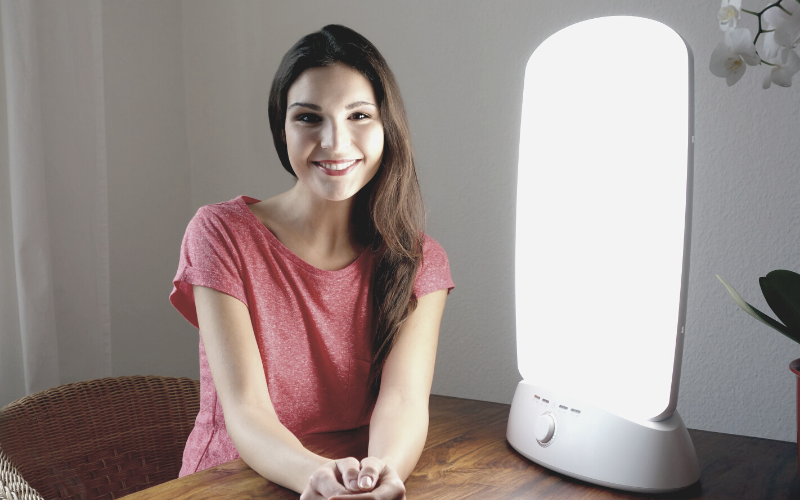
Lightboxes and light therapy
Light therapy involves sitting by a special lamp called a lightbox that simulates the sunlight missing during the dark months. Many health professionals recommend 15 to 30 minutes of light therapy every morning. Using it later in the day may cause insomnia. Approved medical lightboxes have filters that remove harmful ultraviolet (UV) rays. They are generally safe and well-tolerated; most people can use them without the risk of skin or eye damage. But it may not suit everyone, so please check with your GP first, especially if you have diabetes or a retina condition. Lightboxes aren’t available on the NHS but are VAT exempt when used for medical use.
How does light therapy work?
- Light therapy encourages the brain to rebalance hormones affected by low light, reduces the level of melatonin and increases the production of serotonin to help to regulate the sleep/wake cycle and mood.
- If light therapy is going to help, most people will notice an improvement in their symptoms within 7–14 days.
Self-help to prevent or manage SAD
While preventing the first episode of SAD is impossible, and getting a confirmed diagnosis requires, in most cases, repeated episodes, there are simple steps to prevent or lessen symptoms. Plan ahead; start early; talk to your doctor or other healthcare providers about preventive treatment. If your symptoms start around January, consider starting treatment in early autumn.
See your doctor
If you think you are at risk of SAD or had symptoms last autumn-winter, which disappeared in the spring, have a chat with your doctors this month. There’s no blood test or scan to diagnose this condition, but your GP will ask about your mood, lifestyle, eating habits and sleeping patterns, plus any seasonal changes in your thoughts and behaviour. They may recommend testing, including Vitamin D levels and thyroid function, to rule out other conditions that cause similar symptoms.
Disclaimer
Please note: All entries on this blog offer information and guidance only; and should not be considered a substitute for medical advice, diagnosis or treatment given in person by a trained health professional.
SaveSave
SaveSave
SaveSave
SaveSave
SaveSave
SaveSave
SaveSave

